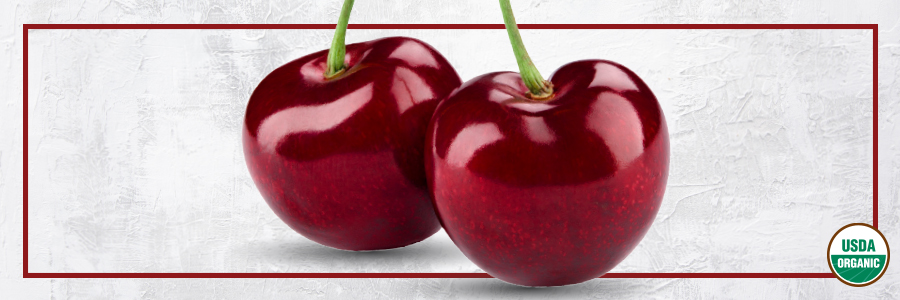


Sign-up for {N}power to get exclusive discounts, newsletters, members-only features, and more!
 Denver - Design District - Alameda and Broadway
Denver - Design District - Alameda and Broadway
368 S Broadway
Denver, CO 80209
United States
 Preferred Store:
Select a Store
Preferred Store:
Select a Store

As cherries grow in rows of lush trees glistening with dots of red under the late spring sun, we’re reminded of the long-time love humans have had for this fruit. A tale as old as time, cherries have been a treasure to humankind since the Mesolithic era. An archeological study found troves of cherry fruit stones at a dig site at the edges of the Danube River in Europe. The researchers suggest that finding cherries in this condition points to their use in rituals and possibly funeral practices.1 And what’s not to love? Not only are the trees they grow on a site to behold, but cherries, sweet and tart, are packed with essential nutrients.

Support your post-workout soreness with a glass of organic tart cherry juice! Tart cherry varieties tend to have higher levels of antioxidants than the sweet ones. The high antioxidant content of the tart varieties of cherries reduce inflammation, oxidative stress, and muscle soreness.2 3 Pucker up and let your muscles melt with a tall glass of organic tart cherry juice—the sweet benefits are worth the funny face of the sour taste!
On those nights when you toss and turn, a glass of organic tart cherry juice might just do the trick. The relaxing benefits of cherries for sleep support are well-studied. Cherries contain melatonin, a hormone critical to regulating sleep-wake cycles. One study showed that even after just seven days, participants who drank two servings of tart cherry juice had higher melatonin levels and increased sleep time and quality.4 Another study found that tart cherry juice can support those with insomnia.5 If you’re up at night, try a glass of organic tart cherry juice to help you unwind and drift into sweet dreams.
Cherries have been a mainstay on the Environmental Working Group’s Dirty Dozen list since 2016 and the 2023 report noted more than 90 percent of cherry samples tested contained residues of two or more pesticides.6 One of the most common insecticides used in conventional cherry farming is bifenthrin, a known hormone disruptor and neurotoxin that is also toxic to bees and fish.7 8 Bees and other pollinators float from tree to tree, pollinating cherry blossoms that will soon turn into sweet or tart fruits. Birds swoop between the trees finding fallen fruits to snack on. But synthetic sprays used in conventional farming disrupt whole ecosystems, even beyond orchard boundaries. Through rain and runoff, any chemicals sprayed will seep into the earth and into waterways, causing harm to aquatic life.9 So let yourself relax and unwind with a bowl of organic cherries, knowing that choosing organic supports pollinators, healthy waterways, and you!



Sign-up for {N}power to get exclusive discounts, newsletters, members-only features, and more!

